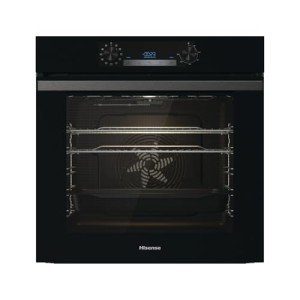Guide To Fitted Ovens And Hobs: The Intermediate Guide To Fitted Ovens…
페이지 정보
작성자 Veta 댓글 0건 조회 2회 작성일 25-05-21 00:55본문
Fitted Ovens and Hobs: An In-Depth Guide to Modern Cooking Appliances
Fitted ovens and hobs have become a staple in contemporary kitchen areas, integrating performance, looks, and innovative technology. These kitchen appliances are developed to flawlessly incorporate into kitchen surfaces, supplying the culinary enthusiast with the tools needed for efficient meal preparation while keeping a sleek and orderly look. build in oven this article, we will explore the various kinds of fitted ovens and hobs, their advantages, aspects to consider when choosing them, and responses to frequently asked questions.
Understanding Fitted Ovens and Hobs
Fitted ovens and hobs are appliances particularly developed to be built into kitchen cabinets or countertops for a seamless appearance. They can differ significantly in design, size, functionality, and functions, which deal with varied cooking needs and kitchen designs.
Types of Fitted Ovens
- Built-in Ovens: These ovens are set up directly into a wall or kitchen unit and can be found in various configurations and sizes.
- Double Ovens: A built-in variation that includes two separate oven compartments, enabling for numerous dishes to be prepared at differing temperatures all at once.
- Combination Ovens: These flexible appliances integrate standard baking with microwave innovation.
- Steam Ovens: Ovens that utilize steam for cooking, keeping moisture in food while improving flavors and nutrients.
- Single Ovens: A standard oven unit that is the most typical type utilized in homes.
Kinds of Hobs
- Gas Hobs: These use gas burners for cooking, using instant heat and exact temperature control.
- Electric Hobs: Powered by electrical power, these hobs often include smooth surfaces that make them easy to clean.
- Induction Hobs: Utilizing electromagnetic energy, induction hobs heat cookware straight instead of the hob surface area, making them energy effective and a safe option.
- Combined Hobs: These use both gas and electric choices, providing versatility for cooking styles.
Benefits of Fitted Ovens and Hobs
Fitted ovens and hobs provide numerous advantages that enhance the cooking experience:

- Space Efficiency: Designed to suit cabinetry, fitted appliances use up less space compared to standalone designs, developing a streamlined kitchen layout.
- Aesthetic appeals: Fitted models frequently produce a more cohesive and visually enticing kitchen design.
- Personalization: Homeowners can pick from a variety of styles, surfaces, and includes to match their kitchen design and cooking needs.
- Enhanced Functionality: Many modern-day fitted ovens and hobs boast sophisticated technology, such as wise controls, self-cleaning features, and precise temperature settings, which streamline cooking.
- Safety Features: Many hobs, specifically induction models, have safety features such as automobile shut-off and child locks, promoting a safer cooking environment.
Factors to Consider When Choosing Fitted Ovens and Hobs
When picking fitted appliances for a kitchen, a number of aspects need to be thought about to make sure the right option:
- Cooking Style: Different appliances deal with various cooking habits. Home cooks need to examine their normal meal preparation techniques to find ideal appliances.
- Area and Layout: Measure the offered space in the kitchen to make sure that the chosen appliances fit nicely without preventing motion.
- Energy Efficiency: Choose appliances with energy-efficient rankings to lower utility expenses and ecological impact.
- Technology and Features: Consider the desired functions, such as clever technology, self-cleaning modes, or particular cooking functions like steam or convection cooking.
- Spending plan: Determine a budget before making selections to ensure that the picked designs line up with financial preparation.
Table: Comparison of Different Types of Ovens and Hobs
| Appliance Type | Pros | Cons |
|---|---|---|
| Built-in Ovens | Space-saving, personalized style | Setup cost can be high |
| Double Ovens | Prepare numerous dishes at various temps | Takes up more area |
| Steam Ovens | Healthy cooking, maintains nutrients | Usually greater expense |
| Gas Hobs | Quick heat control, chosen by chefs | Requires a gas line installation |
| Induction Hobs | Fast cooking, energy-efficient, safe | Needs compatible cookware |
| Electric Hobs | Easy to clean, stable cooking temperature levels | Heating times can be slower |
Regularly Asked Questions (FAQs)
1. What is the distinction between a built-in oven and a freestanding oven?
A built in oven-in oven is integrated electric oven into kitchen cabinets for a seamless look, while a freestanding oven stands alone and is typically more noticeable and available.
2. Are induction hobs safe to use?
Yes, induction hobs are thought about safe as they only produce heat when suitable cookware is put on them, lowering the risk of burns.
3. Can I set up a fitted oven myself?
While some people may choose to install fitted ovens themselves, it is generally advised to hire an expert to make sure appropriate setup and adherence to safety standards.
4. What size of oven is perfect for a small kitchen?
In little cooking areas, fitted ovens think about compact or single built-in ovens that fit within the available area without compromising on cooking functionality.
5. Do fitted ovens and hobs require unique upkeep?
Fitted appliances need basic upkeep, such as cleansing and periodic checks. Nevertheless, specific upkeep jobs depend on the type of oven or hob.
In conclusion, fitted ovens and hobs represent the embodiment of contemporary kitchen design and performance. By understanding their types, advantages, and considerations, customers can make educated choices that improve their cooking experiences while fitting flawlessly into their home. Whether developing premium meals or preparing household dinners, fitted ovens and hobs are important tools in any culinary space.

댓글목록
등록된 댓글이 없습니다.